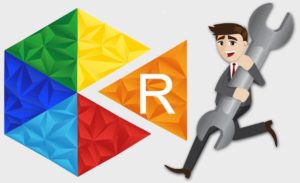Description of Holland’s Six Types of Personalities
Hereby, a quick description of Holland’s Six psychological types of personalities:
 The practical ones are indeed practical, realists, introverted, absolute and dogmatic, powerful and persistent.
The practical ones are indeed practical, realists, introverted, absolute and dogmatic, powerful and persistent.
At their actions they are effective, methodical and down to earth. They are usually direct and truthful.
They are good at technical, mechanical and manual labor.
They may control tools, mechanical systems and electronic devices effectively and they usually lean to technical, technological, mechanical and constructive occupations.
They lean to jobs with practical, technical and usually outdoor nature having direct earnings. Also, they lean to jobs associated with qualities relating to power and money.
Jobs that suit this very type are in between others:
Politics, engineering, mechanical engineering, chemical engineering, geology, metal engineering as well as, Argonomist , ichtyologist , forester, etc.
Investigative
 The investigative ones are lateral, troubled, creative and have a critic way of thinking, with a natural call at science and research.
The investigative ones are lateral, troubled, creative and have a critic way of thinking, with a natural call at science and research.
They are independent, sophisticated, observers and somewhat “weird”. They have analytical and combinative traits.
They could usually become radical, critical and judgmental. They are inward looking, pessimists, defensive and modest.
They are associated with activities which relate to research, understanding and constant check of natural biological, cultural and social phenomena.
The investigative type can be divided in two sub categories:
A) researcher – a positive type, who is into mathematics, physics, chemistry, technology and similar occupations.
B) practical – educative type, who has grammatical and language traits, and prefers social and humane sciences.
Artistic
 Artistic types are complicated. Sensitive, uncontrollable, abstractive, chaotic, unsystematic and emotional. Expressive, impulsive , imaginative, usually non resultant but genuine, idealists, romantic and emotional. They lean to free, abstractive and non-systematical activities and obviously they are font of artistic occupations. Their working environment encourages them to think for themselves as unsystematic and independent. Their main characteristic; the natural talent, in some forms of art like, music, painting, dancing, acting etc. For the artistic type, it is of vital importance to have a decent career in the interesting but difficult path of these artistic occupations.
Artistic types are complicated. Sensitive, uncontrollable, abstractive, chaotic, unsystematic and emotional. Expressive, impulsive , imaginative, usually non resultant but genuine, idealists, romantic and emotional. They lean to free, abstractive and non-systematical activities and obviously they are font of artistic occupations. Their working environment encourages them to think for themselves as unsystematic and independent. Their main characteristic; the natural talent, in some forms of art like, music, painting, dancing, acting etc. For the artistic type, it is of vital importance to have a decent career in the interesting but difficult path of these artistic occupations.
 For the social ones: they are friendly, cooperative, polite, open, funny, warm and lively. They usually are patient, supportive, helpful and condescending people. They are in good terms with most people, they are persuasive, they contribute to whoever needing them and they are involved in activities that have to do with public relations, communication, information and education, therapy, solidarity and welfare. Their working environment drives them to develop their communication skills as well as their understanding and cooperation.
For the social ones: they are friendly, cooperative, polite, open, funny, warm and lively. They usually are patient, supportive, helpful and condescending people. They are in good terms with most people, they are persuasive, they contribute to whoever needing them and they are involved in activities that have to do with public relations, communication, information and education, therapy, solidarity and welfare. Their working environment drives them to develop their communication skills as well as their understanding and cooperation.
We can divide the social type in two categories. The “social–out going” one and the “social–solidarity” one. The first has public relation based skills, sales skills by the means of combining their socialization with goals, targets and personal gain. P.R., sales managers and journalists are some of the occupations that suit them best.
The second is characterized by more solidarity-based social skills. Idealists, sensitive, generous, humane and even self-sacrifice are some of their traits. The occupations that suit them best are in the fields of education, welfare, health, nursing and human cooperation in general.
Enterprising
 The enterprising types are the ones that have leading qualities. They are ambitious, dominant, active, competitive, social, positive, decisive and creative.
The enterprising types are the ones that have leading qualities. They are ambitious, dominant, active, competitive, social, positive, decisive and creative.
They may be described as constant, absolute, restless, active, open, risky, constructive, dynamic, brave, but also ego centered, offensive and bossy.
At their work, they usually develop means of persuasion skills and controlling and influencing others while they think of themselves as popular and full of confidence.
They usually have a simple-minded opinion about the world based on social status and power.
It is obvious that the enterprising type is best at directive or leading occupations and in every job that has an economic prospect and ways of career ascendance.
Conventional
 The conventional types are the ones that accept for granted their way of life, the accepted values of society and the established hierarchy of the dominion. They are loyal with a higher sense of saving money. They are diligent, adaptable, disciplined, careful, tidy, practical, punctual, precise, cool, cooperative, trustful, usually dogmatic and inward looking, methodical and organized. These types direct themselves in activities that are characterized by order, method and punctuality. They, workwise, usually follow a scheduled routine and activities that demand discipline, computer skills, logistics, enterprising and employer skills as well. Occupations that suit them best are police officer, military, public sector employee, diplomat, business executive, librarian, notary, accountant etc.
The conventional types are the ones that accept for granted their way of life, the accepted values of society and the established hierarchy of the dominion. They are loyal with a higher sense of saving money. They are diligent, adaptable, disciplined, careful, tidy, practical, punctual, precise, cool, cooperative, trustful, usually dogmatic and inward looking, methodical and organized. These types direct themselves in activities that are characterized by order, method and punctuality. They, workwise, usually follow a scheduled routine and activities that demand discipline, computer skills, logistics, enterprising and employer skills as well. Occupations that suit them best are police officer, military, public sector employee, diplomat, business executive, librarian, notary, accountant etc.
Holland’s Hexagon
Personality types that are closer to each other in distance are more similar than the others.
For example, the realistic type and the investigative type, shown in the top left and top right corner of the shape, usually have more common interests. On the contrary, the realistic and social types have bigger differences.
The conventional type usually has more in common with the enterprising one and the realistic type and less with the social, artistic and investigative type.
The dispersion and the space occurring from the graph with the types of personalities at each case, as shown in the customized report may reveal the perfect conclusion for the prospects of your career.
As with other scientific analysis, many practical applications have been based at Holland’s theory with which we observe human behavior and its connection with several occupations, studies and career.
Career gate test k17 uses Holland’s theory as a plus in order to conclude to the customized report.
